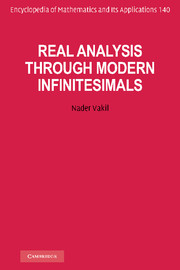Book contents
Preface
Published online by Cambridge University Press: 05 January 2013
Summary
The discrete and the continuous are among the most fundamental categories of the human mind, and our urge to create theories that connect the two has prompted us to invent and deploy the infinite set in a monumental intellectual endeavor known as mathematical analysis.
As a branch of mathematics, analysis has evolved during the last four centuries. Prior to this time, mathematics was mainly geometry and arithmetic (together with some algebra). Natural numbers were the primary concepts of arithmetic, which provided for a quantitative study of discrete phenomena; and straight lines, curves, surfaces, etc. were the primary concepts of geometry, which provided for a quantitative study of continuous phenomena. So from a historical point of view, an understanding of the continuous in terms of the discrete could mean none other than constructing analytic models of the primary concepts of geometry using the stuff of arithmetic, which we accomplished under the auspices of our infinite sets.
The familiar real number system is one example of an analytic model of the geometric line, and the familiar system of the complex numbers is one example of an analytic model of the plane.
- Type
- Chapter
- Information
- Real Analysis through Modern Infinitesimals , pp. xiii - xxPublisher: Cambridge University PressPrint publication year: 2011

